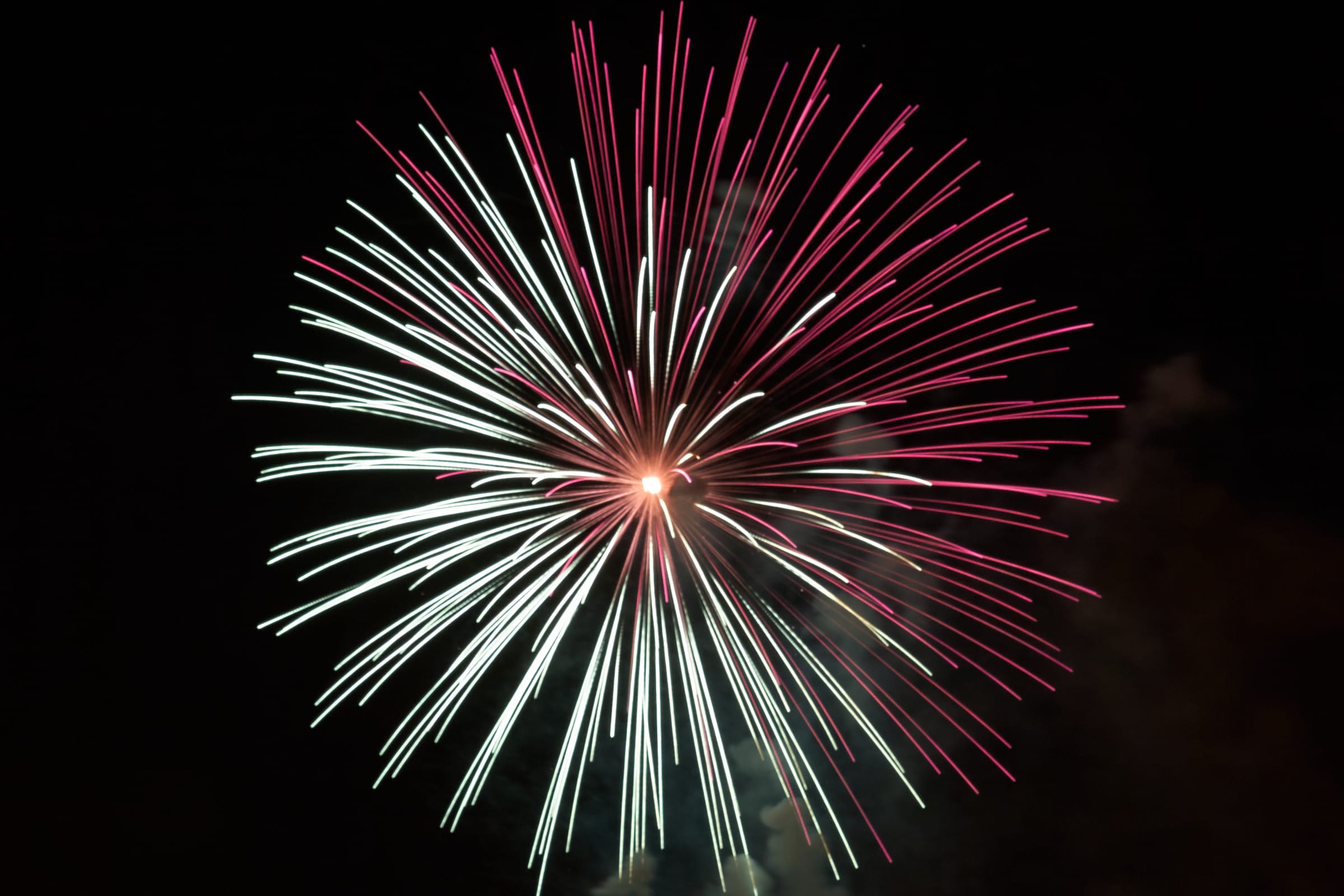Want to shoot great photos of Fireworks this 4th of July?
Capturing photos of fireworks, or more specifically, the light trails created by them is easier than you think. With basic equipment (you probably already have) and a few tips I’m going to share with you here, you’ll be shooting great fireworks photos in no time.
Keep in mind, as with almost any type of photography, there are many different approaches to creatively solving the photographic challenges present when attempting to photograph fireworks.
The information, ideas, and images that follow are my solution.
The Equipment:
- DSLR or Mirrorless camera with manual control
We’re going to need to set the camera’s exposure manually - Sturdy Tripod
We’re going to be using very slow shutter speed, so a tripod is crucial - Medium to Wide Angle Lens
The good news here is you don’t need a particularly fast or expensive lens because we’ll be shooting with a small aperture - Remote Shutter Trigger
This can be a physical trigger plugged into the body of your camera or wireless remote*
The Setup
- Choose a good location – find a location that gives you a good vantage point for capturing the fireworks with minimal interference from other people. You not only want to avoid people and objects that block your view, but also people tripping on your tripod or equipment.
- Compose your image – set up your tripod, put your camera on it and choose a composition. Keep in mind that the fireworks are not all going to explode in exactly the same spot in the sky, so choose a viewing angle that has some tolerance. You may not be able to determine your final composition until the show begins, but that’s ok.
- Quality – RAW, highest resolution this gives you the most color information and the largest amount of pixel data helping you maintain quality when cropping
- Exposure settings – Shoot in Manual mode or Bulb (more on bulb mode below); choose a small aperture usually somewhere between f/8 and f/16 works best. You can keep your ISO at the native setting (100 is a good choice), but your shutter speed is going to be slow (hence, the tripod). I recommend using a shutter speed of between 2.5s – 5s, more on that in a minute.
- Turn off anti vibration; turn off long exposure noise reduction – you don’t need it and it will force you to wait several seconds between exposures.
- White Balance – I like the colors with the Tungsten setting or with the K set to around 3500deg. Don’t obsess over this; you can fine-tune the RAW file later. If in doubt, just leave it in Auto.
- Focus – you will set focus at the beginning of the fireworks show using the first one or two explosions, then switch your lens into MANUAL focus, and leave it alone! You don’t want your autofocus to keep hunting around for each exposure or you’ll miss most of the shots; putting it in manual means it won’t change. Keep in mind that if you change zoom or composition, you’ll have to refocus, but otherwise you can just leave it alone.
About that Shutter Speed…
To capture the light trails from the fireworks, you’re going to want to leave the sensor exposed from the time the firework explodes until the the trails all disappear. This can be anywhere from 2-5s, maybe longer.
My preferred method of capturing fireworks is using Bulb mode. This means that the exposure time lasts as long as I hold down the shutter button. When I press the shutter, the curtain opens, and when I release it, the curtain closes, concluding the exposure.
You don’t want to push the shutter button on the camera body, however, because that might cause the tripod to shake a little and introduce motion blur to our photo. This is why I recommend a remote or a shutter release button on a cable that allows you to work in Bulb mode.
If you find Bulb mode won’t work for you, you can try setting your shutter speed to about 3s and trigger your exposures in time with the explosions.
Adjustments
Keep a close eye on the images from the first few fireworks and fine tune the composition, the aperture and the shutter speed until you get the shots you love. Remember if you change zoom or composition, you must refocus!
The end of fireworks shows often have a lot of bright explosions in quick succession. At this point in the show, it’s quite possible that your photos will be over exposed. You could try reducing your aperture, shortening the shutter speed (but you won’t get the pretty light trails), or forgetting about the camera all together and enjoying the finale.
Happy Fourth of July!


